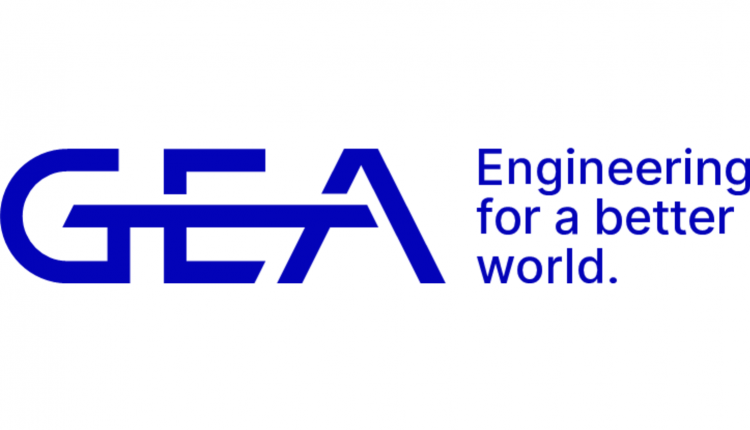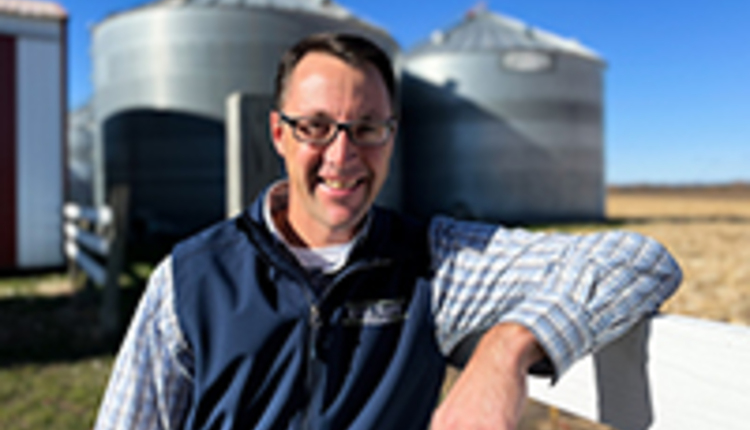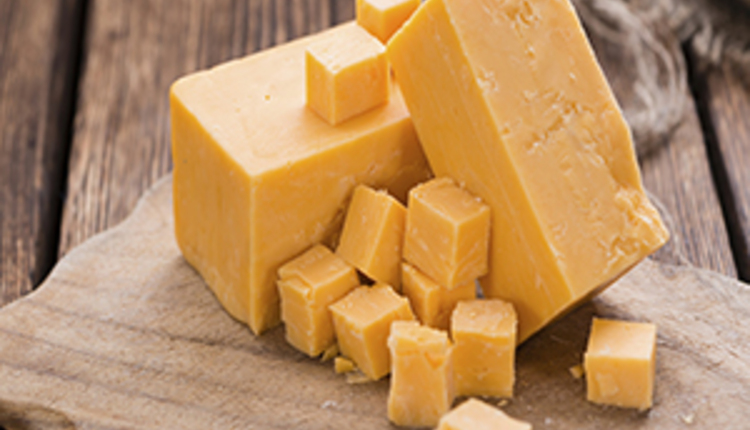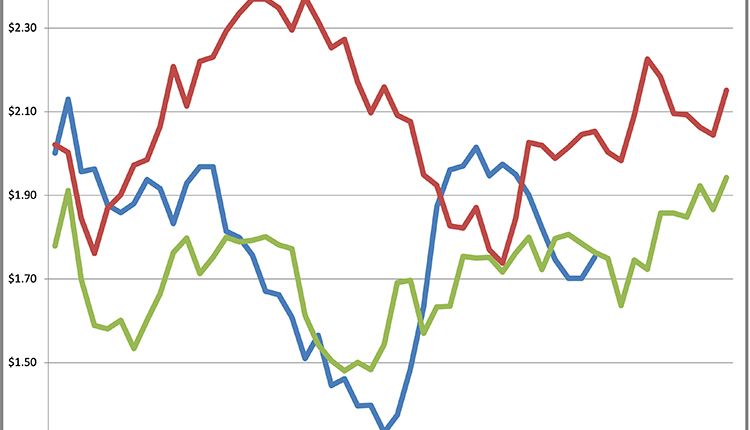The information below has been supplied by dairy marketers and other industry organizations. It has not been edited, verified or endorsed by Hoard’s Dairyman.

Max Winders and Dr. Tom Peters look back on those “what-if” discussions and smile. In 2021, they and 17 Midwest cattle farming families launched BetterFed Beef, a company to bring their dream into reality.
Fundamentally, BetterFed Beef is a vehicle to solve many seemingly intractable problems facing U.S. cattle producers, consumers, and the ongoing U.S. food stability/resiliency challenge. Consider:
1. Cattlemen are desperate to regain some control over the value of their cattle – to receive a fair price for their animals, hard work and investment.
2. Consumers want full transparency and trust in their food and, especially, their beef. Where did it come from? Who raised it? How was it raised and cared for?
3. The current administration wants improved food resiliency and infrastructure to supply locally grown food to communities. They emphasize the over-reliance on four giant meat packing companies that control more than 85% of all beef processing.
Cattle producers concerned for their future
“Every year it’s more difficult to make money in the cattle farming business,” says Ben Truesdell, the third-generation steward of Truesdell’s family farm near Sherburn, MN, and an investor-owner in BetterFed Beef.
Truesdell continues, “No matter the quality, the care or the efficiency, we’re more and more unable to get a price that reflects the value of the cattle. You’d like to think that the better the cattle, the better the price, but that doesn’t seem to be the case anymore.”
Truesdell’s brother, Andy adds, “We’re not greedy. We don’t want the consumer to pay high prices for our beef. But when you see the supermarket prices for beef and you see what we were paid, the gap is huge. Why can’t we get some margin – just a fraction?”
The reason margins are so thin for cattle producers, Dr. Peters explains, is because the supply-price relationship has become decoupled. This has happened because the U.S. beef industry lacks competition in purchasing beef. Four giant beef processors dominate the U.S. and global markets and have no incentive to compete for cattle purchases.
“Why bloody each other when there are plenty of cattle available to share, and plenty of cattle to import and label as ‘Product of USA’ in the supermarket?” Dr. Peters emphasizes.
This oligopolistic sharing of the beef crop between four players results in low-to-no competition at the ranch or feedyard. This leaves producers with low prices for their cattle, regardless of consumer demand for beef.
“Producers can’t afford to hold onto cattle for a better price,” Dr. Peters explains. “Once cattle are market-ready, each day costs money and drains profits further. It’s crazy, but cattle producers often only get one packer to bid on their cattle. They are subsequently told by the buyer that ‘they are fortunate.’”
This is not a new phenomenon. In fact, it is approaching the last breath in a long struggle between cattle producers and packers. A century ago in 1921, the Packers Stockyards Act was passed by the U.S. Congress, ostensibly to reduce the monopoly that the Big 4 packers had on the industry and resolve the “war on the packers” that western stockmen launched in 1914.
Winders notes with some irony, “In 1914, the Big 4 controlled about 72% of the U.S. beef processing industry. Today, they control more than 84%. In 100 years, not much has changed; on what basis should we expect different going forward?”
A Shared Vision
The 17 cattle-producing families who are owners in BetterFed Beef share a core vision: To continue their family's proud legacy of farming by providing future generations the possibility of a better way to market their cattle.
Chad Groenhagen says the ultimate litmus test in sustainability is whether the family legacy can survive on the farm. Staring across the rolling hills of his farm near Oregon, IL, he shares, “I guess we’re investing in BetterFed Beef for our children and grandchildren.”
Groenhagen explains that the next generations might get the benefit of continuing to farm because of a direct relationship with the American consumer. “We need to gain the consumer’s trust through BetterFed Beef. We can do so by connecting directly with them in a meaningful and transparent way by using technology. Then we have a chance of securing an enduring relationship that can span generations, on both sides.”
Groenhagen further adds, “We’re thinking long game here. It will take decades to build, so we might as well get going now. We reckon the sooner we get our feet wet the better.”
Connecting City to Farm
All disruptive technology initially looks fringe and unlikely. Yet, disruptive technology embodies true innovation and often brings big change, says Winders. “Like The big bang theory, disruptors come from something infinitely small. It’s an idea and then suddenly, bam! They’re here!”
• Think about camera film. It was everywhere and such a sure thing that Kodak, the inventor of digital camera technology, decided it was not worth developing (pun intended). Then, seemingly overnight, Kodak executives woke up to find that camera film was done and consigned to the dumpster or museum.
• Look at what Starbucks did to commodity coffee like Folgers and Maxwell House. They reinvented coffee around an experience – a relationship with individuals and a place to belong.
• Today we’re watching Tesla reinvent transportation, with the promise of safer, cleaner vehicles. Every other legacy automaker is now reacting to try and keep up.
Winders believes beef processing and marketing is ripe for disruption. The technology exists to communicate with almost every American consumer and build a virtual, yet meaningful relationship.
“We can reliably connect consumers with our farm families,” he explains. “They can share their love of beef, their interest in BBQ, family, environment, day-to-day farming, animal care, and so on. The conversations are free to be had and engaged in once introductions are made.”
BetterFed Beef is the connector – the hub for introducing beef-loving consumers with beef-loving farmers.
A generation ago, the majority of Americans had some contact with farming animals, the farming ethos, and way of life. Today, nearly all Americans under age 30 have had no direct contact or experience on a farm, let alone a beef ranch.
“Let’s change that,” says Winders. “We have the tech tools to do it. We have cattle-producing families who are smart, successful, and passionate about raising the best beef in the world. We have millions of Americans living in cities who are curious to learn more about their food.”
“This awesome Midwest beef can be the conduit to open the communication and relationship. Just imagine that as friends gather, someone scans the QR code on the BetterFed Beef box and opens the webpage for the family that raised the beef. They can learn about the steer, its genetics, how it was raised and cared for. And they can communicate with the family farmers who raised it.”
Now that’s connecting food with farmers, in real-time, and with complete transparency.
It’s happening now
The city-farm virtual connection is already happening through BetterFed Beef. For example, customers in Seattle and San Francisco connected with the family that raised the beef that they grill and eat.
“It's very cool to make this connection possible and it means a lot to the cattle producing family to hear from a customer way out on the coast who is thankful for the awesome beef,” Winders says.
Luke Gorecki, a cattle producer outside Taunton, MN, and investor-owner in BetterFed Beef, relates how his dad told him and his brother Adam, "If you want to get something done, roll up your sleeves and go do it. I think that's what it comes down to for BetterFed Beef. We can always talk about what-if, but someone has to take the plunge and bring it into the world.”
Gorecki is hopeful that the BetterFed Beef venture paves the way for his peers. “Other cattle producers can benefit from our pioneering, by watching and learning from our mistakes and build their own direct-to-consumer company.”
Winders concludes, “Packers have a role to play through highly efficient processing of huge volumes of animals. But cattle producers can’t be collateral damage as a result. That’s why we’re taking back some control for these families through BetterFed Beef.”











